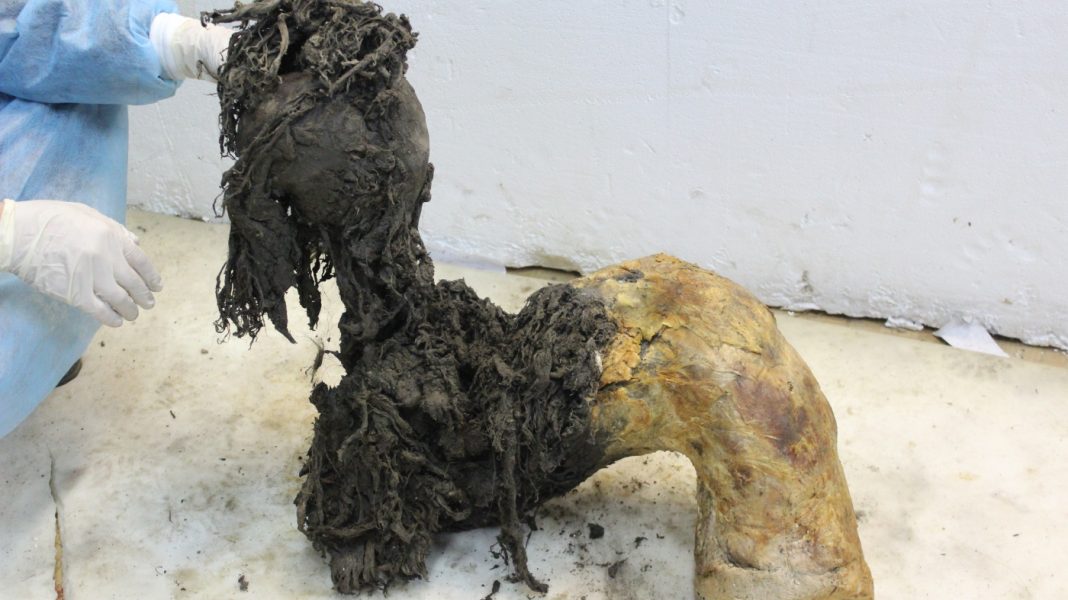<p>Imagine gazing through a window directly into the biological processes of a creature that roamed the Earth tens of thousands of years ago. That’s precisely the kind of awe-inspiring possibility emerging from a groundbreaking scientific discovery: the successful identification of ancient RNA in a woolly mammoth. For years, finding DNA from long-extinct species has been a monumental achievement, offering blueprints of their genetic makeup. But RNA? That’s an entirely different beast, and its discovery has profound implications for how we understand life, death, and the very fabric of ancient biology.</p>
<h2>The Fragile Echo of Life Itself</h2<
<p>To grasp the significance of finding ancient RNA, it helps to understand its role. Think of <strong>DNA</strong> as the master blueprint for an organism – the complete instruction manual locked away in the nucleus of every cell. <em>RNA</em>, on the other hand, is the active messenger, the working copy of specific instructions dispatched to build proteins, regulate cellular functions, and execute life processes in real-time. It’s dynamic, constantly being made and broken down. This makes RNA far more fragile and notoriously unstable than DNA, degrading much faster upon an organism’s death.</p>
<p>That’s why this discovery isn’t just “cool”; it’s a paradigm shift. Finding ancient RNA isn’t merely discovering a long-lost instruction manual; it’s like unearthing a perfectly preserved, millennia-old daily “to-do” list from a creature. It tells us not just <em>what</em> the mammoth was designed to be, but potentially <em>how</em> its cells were actually operating, what genes were active, and what biological tasks were underway right up until its preservation. “This isn’t just about ancient genetics; it’s about understanding the living processes of long-extinct creatures in unprecedented detail,” remarked Dr. Anya Sharma, a theoretical paleogeneticist. This level of insight offers a much richer, more functional view of ancient life than DNA alone can provide.</p>
<h2>Unlocking Mammoth Secrets and Beyond</h2>
<p>The implications of having ancient RNA are vast and exciting, reaching far beyond just woolly mammoths. Firstly, it offers a deeper dive into the <strong>physiology and adaptation</strong> of extinct animals. For instance, RNA could reveal the specific genes that were highly active in a mammoth’s skin cells to grow its thick, insulating coat, or in its fat cells to store energy for arctic winters. This moves us from theoretical understanding to empirical evidence of ancient biological function.</p>
<p>Secondly, while the notion of de-extinction – bringing species back to life – remains largely in the realm of science fiction, RNA adds another crucial layer to the genetic puzzle. If scientists ever hope to recreate a living organism, they would need not just the blueprint (DNA) but also a comprehensive understanding of the cellular machinery and gene expression patterns (which RNA provides). It helps bridge the gap between static genetic information and dynamic biological processes.</p>
<p>Moreover, this breakthrough opens new avenues for studying <strong>ancient diseases and pathogens</strong>. Could we find traces of ancient viruses or bacteria actively replicating within the mammoth’s cells through their RNA signatures? This could have profound implications for understanding evolutionary immunology and the history of disease, perhaps even informing our approach to modern pathogens. The techniques developed to stabilize and sequence this ancient RNA could also pave the way for similar discoveries in other exceptionally preserved specimens, potentially extending our understanding across countless extinct species.</p>
<p>The discovery of ancient RNA in a woolly mammoth is more than just a remarkable find; it’s a testament to the enduring power of scientific curiosity and technological advancement. It pushes the boundaries of what we thought was possible, offering an unprecedented glimpse into the active biology of the distant past. As researchers continue to unravel these delicate genetic threads, we stand on the precipice of a new era in paleogenetics, where the secrets of extinct life are speaking to us in a voice clearer than ever before. The past is communicating, and we are just beginning to learn how to truly listen.</p>




